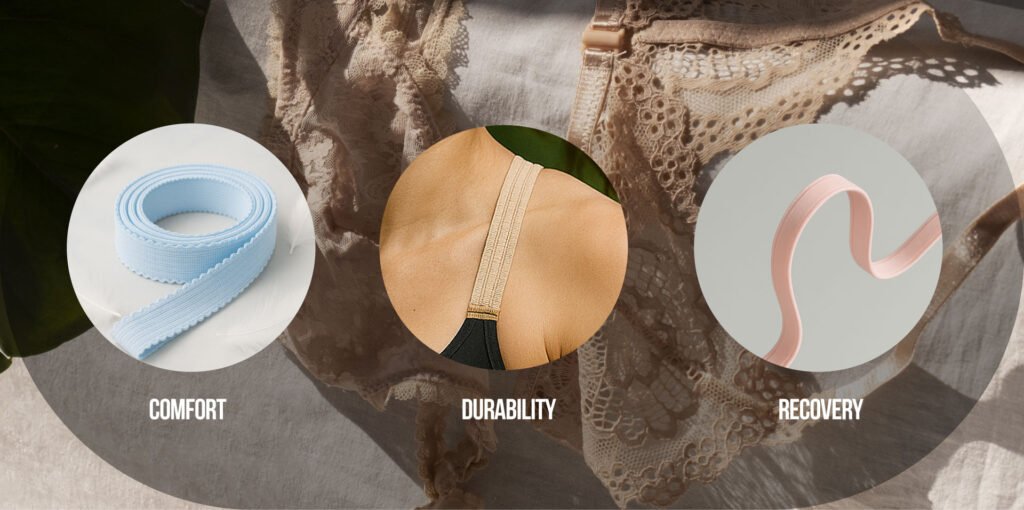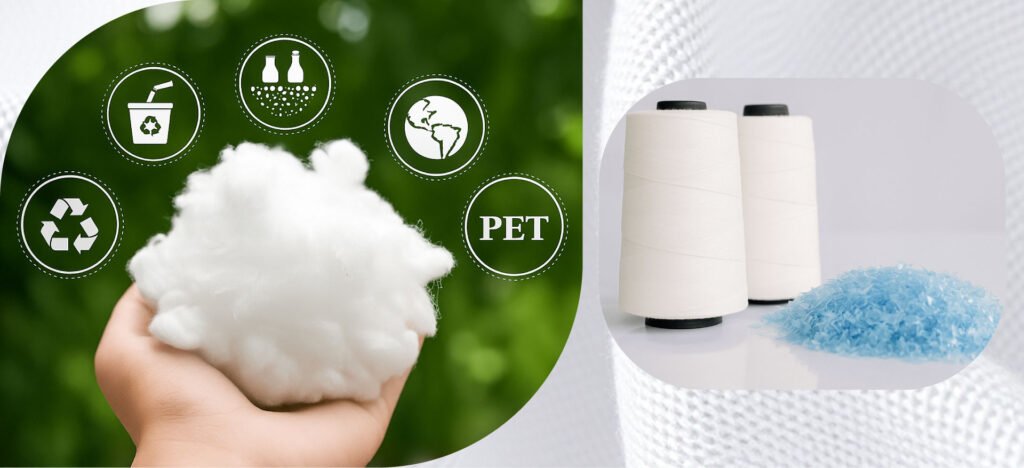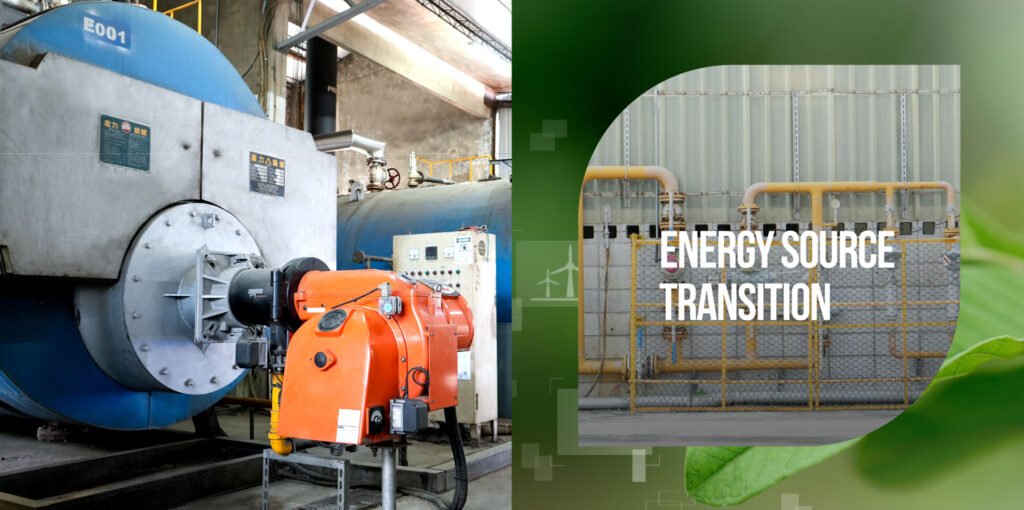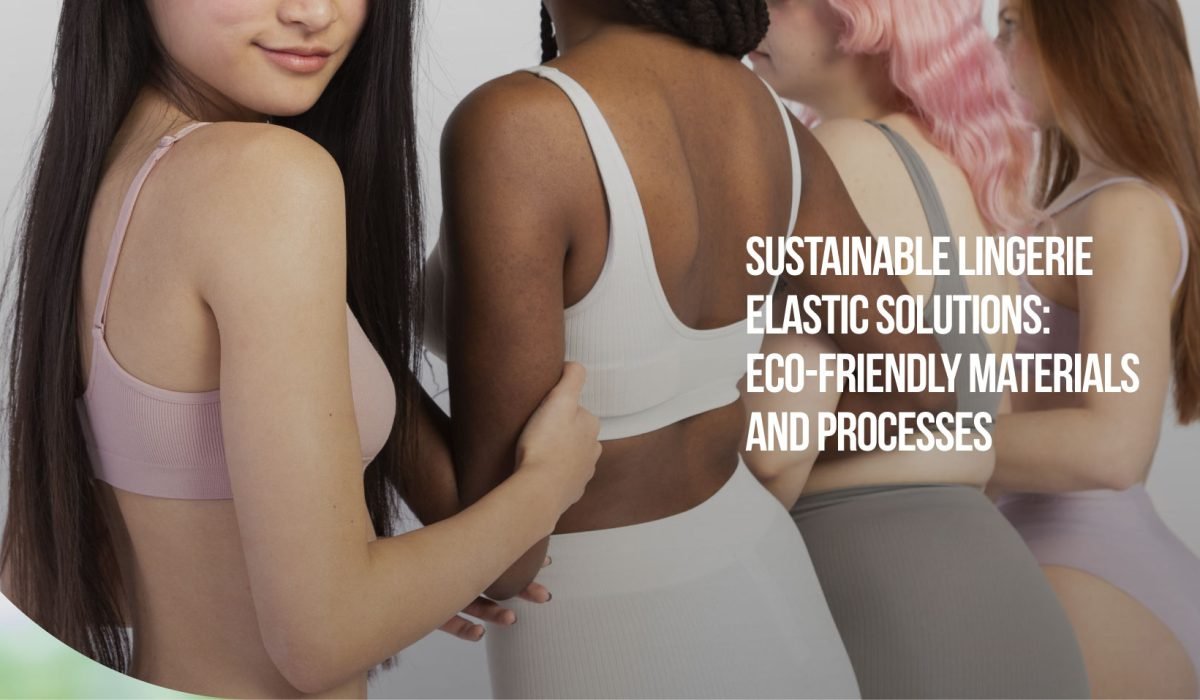The lingerie industry is undergoing a major sustainability transformation driven by consumer demand and regulations. For lingerie manufacturers and brands, this presents a new challenge: how to incorporate eco-friendly materials and production processes while maintaining comfort, fit, and functionality?
At our company, we collaborate closely with leading manufacturers and brands to develop sustainable elastic solutions without compromising quality. Here’s what you need to know about the current landscape, including trends in sustainable lingerie elastics and how these innovations can elevate your product line.
Sustainable Challenges in Underwear Manufacturing
The elastic bands required for underwear products must deliver exceptional comfort, durability, and resilience, often while maintaining prolonged direct skin contact. Elastic fibers such as spandex remain the ideal choice for providing high extensibility and rebound properties, particularly suited for functional applications demanding extreme elasticity.
However, as brands move toward “circular design” and “single-material construction,” the industry is exploring additional material options. While products containing elastic fibers remain critical, more recyclable alternatives are being introduced for certain applications with moderate elasticity requirements.

Recycled Polyester: The Cornerstone of Sustainable Elastic Bands
Global Recycled Standard (GRS) Certified
Recycled polyester has become a key material for sustainable underwear elastic bands. GRS-certified recycled polyester yarn offers the following advantages:
Significantly reduced environmental impact compared to virgin polyester
Stable and reliable performance
Traceable supply chain
Compatibility with existing manufacturing processes
Our experience demonstrates that elastic bands made from recycled polyester maintain excellent elasticity, resilience, and handfeel while substantially reducing carbon footprint. The key lies in partnering with suppliers who understand the specific demands of underwear applications.

Performance Considerations
When transitioning to recycled polyester elastic bands, the following technical aspects require attention:
Resilience: Advanced recycled polyester achieves 90–95% resilience, approaching virgin material levels
Colorfastness and Consistency: Advanced dyeing and finishing techniques ensure color consistency between batches
Durability: Proper yarn selection and structural design ensure products meet underwear wash durability standards
Green Manufacturing Processes
Sustainable materials are only part of the overall solution; the environmental impact of the manufacturing process itself is equally significant. Two hundred enterprises have implemented multiple green manufacturing innovations, demonstrating the industry’s potential for positive transformation:
Energy Transition
In 2022, we completed the transition of our dyeing and finishing plants from coal to natural gas. This initiative effectively reduced environmental pollution and carbon emissions while maintaining product quality and production capacity.

Equipment Modernization
Advancing sustainability goals through equipment upgrades:
Electric Fleet: Replacing diesel equipment with electric stackers to reduce carbon emissions and enhance operational safety
Energy-Efficient Machinery: Upgrading winding machines to variable frequency control systems, significantly reducing energy consumption
Integrated Production Lines: Consolidating weaving, knitting, and finishing processes to minimize transportation and energy waste
Circular Manufacturing Mechanism
Implementing closed-loop production to enhance resource efficiency:
Recycled Yarn Reuse: Converting production waste yarn into fancy yarns to create a waste-reducing, commercially viable reuse system
Water-Saving Dyeing & Finishing Technology: Introducing advanced dyeing systems to effectively reduce water consumption while maintaining high color consistency, meeting the stringent color accuracy requirements for underwear


